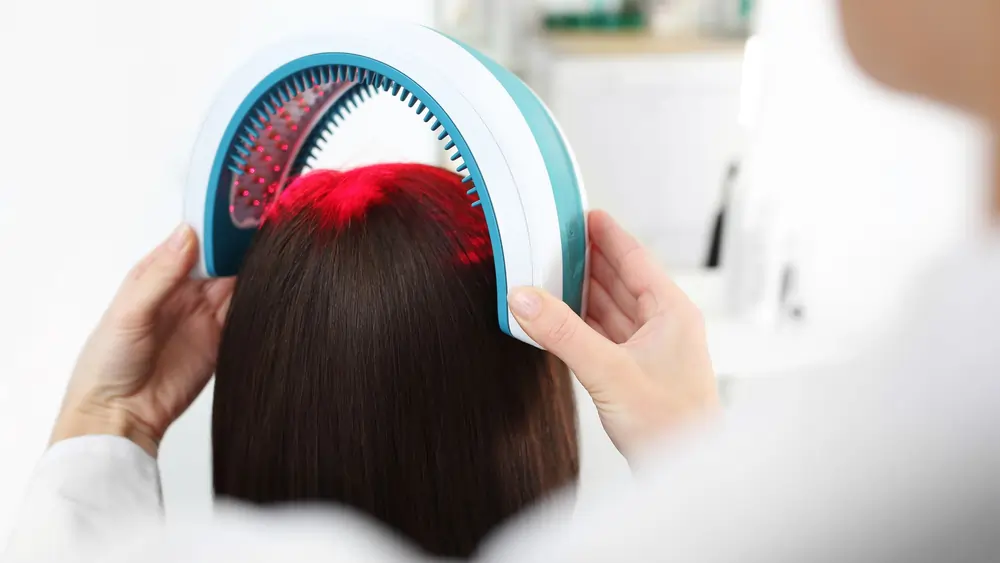Hair shaft abnormalities or hair shaft defects are common and they are an indicator of underlying pathology. In its most simple terms, hair shaft abnormalities refer to fractured hair. It does sound strange but it is something that exists and it is quite common. This condition can only be diagnosed by a professional but the different types, symptoms, and treatments will be explored below.
What Is A Hair Shaft and What Are The Hair Shaft Abnormalities?
The outermost layer of the skin is called the epidermis and it is also the layer of skin where your hair root can be found and from where your hair grows. The part of the hair that can be found within the epidermal layer of your skin is called the hair follicle. This part of the hair is where your hair generation comes from and where your blood vessels connect to your hair to ensure it gets the vital nutrients that it needs. One of the ways to ensure your hair follicles receive proper blood flow is with a proper exercise program or practicing yoga for hair loss. The hair shaft is the part of your hair that is found outside of the skin. This is the hair that is usually visible to you.
Hair shaft abnormalities can be congenital or they can be acquired over time. It is usually determined by a professional when the hair shaft is examined underneath a microscope and there are structural changes to the hair. When the abnormalities are widely spread, it can lead to conditions such as alopecia areata. Some of the hair shaft abnormalities that can be found are:
- Trichorrhexis Nodosa (TN): This hair shaft abnormality is commonly occurring. It is characterised by the presence of nodules that can be found on the hair strand and it leads to hair breakage and alopecia.
- Trichoclasis: In this hair shaft abnormality, there is no constant abnormality observed, it is quite random. The hair fracture that occurs is a transverse fracture of the hair shaft, however, the hair cuticle remains intact.
- Trichoptilosis: This hair shaft abnormality is commonly known as split ends, where the hair shaft separates longitudinally. This type of fracture is usually caused by trauma experienced by the hair shaft causing the cortical fibres to separate like frayed ends.
- Trichonodosis: This hair shaft abnormality is more commonly known as the knotting of hair. It is usually observed in curly hair and can be acquired due to trauma or due to your unique genetic disposition.
- Trichoschisis: This disorder is normally observed in brittle hair that has a low sulphur content. The hair tends to break in a clean break due to the absence of a hair cuticle.
- Trichorrhexis Invaginata: This shaft abnormality is a marker for Netherton’s Syndrome and it is also known as Bamboo hair. The hair shaft tends to occur sporadically.

The Possible Causes For Hair Shaft Abnormalities
Hair shaft abnormalities are usually caused by underlying disorders and can eventually lead to hair loss. Most of these disorders can be treated by a medical professional and can be tested for by a pathologist. They can include a wide range of possible reasons. Firstly, physical trauma, such as:
- Excessive hair combing
- Hair perming or straightening
- Blow-drying
- Aggressive scalp messages
- Stressed hairstyles where the hair is pulled into tight positions causing strain on the hair shafts
- Excessive heat application to hair
- Lengthy or repeated exposure to ultraviolet light
There can also be chemical reasons, such as:
- Excessive exposure to saltwater or chlorinated water
- Excessive shampoo use
- Bleaching your hair
- Frequent application of hair dyes
- Frequent use of hair sprays
- Using a chemical straightener.
Finally, there can be a range of underlying disorders that can cause hair shaft abnormalities, such as:
- Hypothyroidism – Your Thyroid gland is overactive
- Argininosuccinic Aciduria – It is a condition that causes there to be a build-up of ammonia within your body.
- Netherton’s Syndrome
- Menkes Syndrome / Menkes Kinky Hair Syndrome
- Ectodermal dysplasia – Abnormal development of the skin, hair, nails, teeth, or sweat glands.
- Inherited disorders
- Malnutrition
- Biotin deficiency – This is usually caused by a genetic disorder that prevents your body from producing biotin or not producing enough biotin
The Common Symptoms
The only way to determine if you have any hair shaft abnormalities is to go to a medical professional and have them look at your hair under a microscope and then work out a treatment plan for you from there. There are, however, a few ways you can determine if you need medical intervention. They are:
- Patchy Hair
- Dull Hair
- Brittle Hair
- Hair that breaks easily
- A lack of hair growth
- The ends of your hair shaft are very thin and split
- There is a white colouration of your hair tips.
Treatment Of Hair Shaft Abnormalities
Once you have visited a medical professional and they have determined the root problem of your abnormality, then they will put you on a treatment plan to restore your hair and allow it to become healthy once more. Treatment can include:
- Hydrating therapies
- Deep conditioning
- External or internal health supplements
- Treatment for the underlying cause of the hair shaft abnormality
Preventing Hair Shaft Abnormalities
It is not always possible to prevent hair shaft abnormalities from occurring as there are many reasons to explain why they occur and some are just not preventable. Luckily, there are some steps you can take to try and prevent physical or chemical trauma from occurring to your hair. Ensure you have a healthy hair care regime and take care to eat properly and have a healthy well-balanced diet to ensure your hair gets all the nutrients it needs. Other preventative steps include:
- Avoiding the frequent use of styling equipment
- Avoid chemical treatments on your hair
- Avoid over-brushing or constant grooming
- Try avoiding products with strong chemicals such as dyes or straightening compounds
- Drink enough water
- Use quality hair care products
- Hair that is prone to dryness should be deep conditioned periodically
Final Thoughts
Hair shaft abnormalities are common and can have a range of reasons for their occurrence, but do not worry. With proper care, a qualified professional, sometimes, it is possible to treat it and ensure that healthy hair is once again a part of your life.





